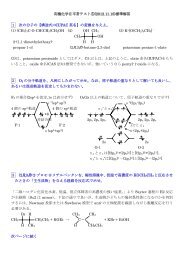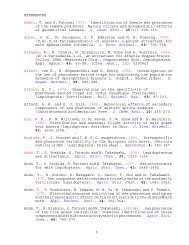Electrical Properties of Pulsed Laser Crystallized Silicon Films
Electrical Properties of Pulsed Laser Crystallized Silicon Films
Electrical Properties of Pulsed Laser Crystallized Silicon Films
Create successful ePaper yourself
Turn your PDF publications into a flip-book with our unique Google optimized e-Paper software.
Jpn. J. Appl. Phys. Vol. 38 (1999) Pt. 1, No. 4A T. SAMESHIMA et al. 1897<br />
to smaller values than that at the top surface. The decrease<br />
in the carrier mobility and the normalized heights <strong>of</strong>E 2 peak<br />
with increasing laser energy density above 280 mJ/cm 2 shown<br />
in Figs. 6 and 7 was probably caused by microcrystallization,<br />
31) which occurs through rapid solidification <strong>of</strong> deepundercooled<br />
molten silicon induced by complete melting <strong>of</strong><br />
the silicon films. Very small ∼10 nm crystalline grains are<br />
formed through rapid crystallization, and disordered amorphous<br />
states are also formed. The microcrystalline state<br />
would dominate at the bottom interface because <strong>of</strong> small normalized<br />
E 2 peak heights at the bottom surface. Because<br />
amorphous silicon has a higher internal energy and a lower<br />
melting point than crystalline silicon, single pulse irradiation<br />
can melt a silicon film completely at lower laser energy densities<br />
compared with multiple-laser-pulse crystallization, which<br />
changes the films from amorphous to crystalline during the<br />
stepwise increase <strong>of</strong> laser energy density. Microcrystallization<br />
was not observed for laser energy densities lower than<br />
400 mJ/cm 2 in multiple-laser-pulse crystallization, as shown<br />
in Figs. 3 and 5.<br />
4. Summary<br />
The electrical properties <strong>of</strong> phosphorus-doped pulsed laser<br />
crystallized silicon films were investigated by analyses <strong>of</strong> free<br />
carrier optical absorption and Hall effect measurements. The<br />
analysis <strong>of</strong> free carrier optical absorption revealed that the<br />
carrier mobility increased from 20 to 40 cm 2 /Vs as the laser<br />
energy density increased from 160 to 375 mJ/cm 2 by XeCl excimer<br />
laser irradiation by increasing the laser energy density<br />
stepwise in vacuum for silicon films 50 nm thick implanted<br />
with phosphorus atoms at a density <strong>of</strong> 2.5 × 10 15 cm −2 . The<br />
mobility did not depend on number <strong>of</strong> laser pulses, and its<br />
maximum was close to that <strong>of</strong> doped single crystalline silicon.<br />
On the other hand, the carrier mobility obtained by Hall<br />
effect measurements markedly increased from 3 to 28 cm 2 /Vs<br />
as the laser energy density increased or the number <strong>of</strong> laser<br />
pulses increased. The E 2 peak height normalized by the peak<br />
reflectivity (R/R) at the top silicon surface and the bottom<br />
Si/substrate interface increased as the laser energy density<br />
increased. From these results, we interpret that crystalline<br />
grains formed by irradiation at laser energy densities above<br />
the crystallization threshold have good properties and high<br />
carrier mobility, but high laser energy densities as well as<br />
numbers <strong>of</strong> multiple pulses are required to reduce disordered<br />
amorphous states and improve grain boundary properties to<br />
increase the carrier mobility <strong>of</strong> electrical current traversing<br />
through grain boundaries. The energy barrier height was estimated<br />
to be 11 meV from the difference in the maximum<br />
mobilities obtained by these two methods. Single pulse irradiation<br />
caused crystallization <strong>of</strong> doped silicon films entirely,<br />
but the maximum carrier mobility was 15 cm 2 /Vs, which was<br />
lower than that obtained by multiple-pulse irradiation. In the<br />
case <strong>of</strong> single pulse irradiation, degradation <strong>of</strong> the crystalline<br />
state and reduction <strong>of</strong> carrier mobility probably caused by<br />
microcrystallization were observed for laser energy densities<br />
from 300–400 mJ/cm 2 , which were realized under cooling because<br />
<strong>of</strong> the low melting point <strong>of</strong> initial amorphous silicon.<br />
Acknowledgements<br />
The authors would like to thank H. Oshima, S.Inoue, T.<br />
Saitoh and T. Mohri for their support.<br />
1) T. Sameshima, S.Usui and M.Sekiya: IEEE Electron Device. Lett. 7<br />
(1986) 276.<br />
2) K. Sera, F. Okumura, H. Uchida, S, Itoh, S. Kaneko and K. Hotta: IEEE<br />
Trans. Electron Devices 36 (1989) 2868.<br />
3) T. Serikawa, S. Shirai, A. Okamoto and S.Suyama: Jpn. J. Appl. Phys.<br />
28 (1989) L1871.<br />
4) H. Kuriyama, T. Kuwahara, S. Ishida, T. Nohda, K. Sano, H. Iwata, S.<br />
Noguchi, S. Kiyama, S. Tsuda, S. Nakano, M. Osumi and Y. Kuwano:<br />
Jpn. J. Appl. Phys. 31 (1992) 4550.<br />
5) A. Kohno, T. Sameshima, N. Sano, M. Sekiya and M. Hara: IEEE Trans.<br />
Electron Devices 42 (1995) 251.<br />
6) M. Miyasaka, T. Komatsu, A. Shimodaira, I. Yudasaka and H. Ohshima:<br />
Jpn. J. Appl. Phys. 34 (1995) 921.<br />
7) A. Matsuda: J. Non-Cryst.Solids 56–60 (1983) 767.<br />
8) Y. Chida, M. Kondo and A. Matsuda: J. Non-Cryst. Solids 198–200<br />
(1996) 1121<br />
9) E. Fogarassy, B. Prevot, S. De Unamuno, E. Elliq, H. Pattyn, E. L. Mathe<br />
and A. Naudon: Appl. Phys. A 56 (1993) 365.<br />
10) P. Mei, J. B. Boyce, M. Hack, R. A. Lujan, R. I. Johnson, G. B. Anderson,<br />
D. K. Fork and S. E. Ready: Appl. Phys. Lett. 64 (1994) 1132.<br />
11) T. Sameshima, N. Takashima, K. Saitoh and N. Betsuda: Proc. Third<br />
Symp. Thin Film Transistor Technologies, ed. Y. Kuo (Electrochemical<br />
Society, Pennington, New Jersey, 1996) Vol. 96-23, p. 296<br />
12) T. Sameshima, K. Saitoh, M. Satoh, A. Tajima and N. Takashima: Jpn.<br />
J. Appl. Phys. 36 (1997) L1360.<br />
13) D. H. Lowndes, G. E. Jellison, Jr. and R. F. Wood: Phys. Rev. B 26<br />
(1982) 6747.<br />
14) T. Sameshima, M. Hara and S. Usui: Jpn. J. Appl. Phys. 28 (1989)<br />
L2131.<br />
15) G. J. Galvin, M. O. Thompson, J. W. Mayer, R. B. Hammond, N. Paulter<br />
and P. S. Peercy: Phys. Rev. Lett. 48 (1982) 33.<br />
16) V. M. Glazov, S. N. Chizhenvskaya and N. N. Glagoleva: Liquid Semiconductor<br />
(Plenum Press, New York, 1969) p. 60.<br />
17) T. Sameshima, M.Hara and S.Usui: Jpn. J. Appl. Phys. 28 (1989) 1789.<br />
18) R. F.Wood, J. R. Kirkpatrick and G. E. Giles: Phys. Rev. B 23 (1981)<br />
5555.<br />
19) M. Born and E.Wolf: Principles <strong>of</strong> Optics (Pergamon, New York, 1974)<br />
Chaps. 1 and 13.<br />
20) H. Engstrom; J. Appl. Phys. 51 (1980) 5245.<br />
21) M. Miyao, T. Motooda, N. Natuaki and T. Tokuyama: Proceeding in<br />
<strong>Laser</strong> and Electron-Beam Solid Interactions and Materials Processing<br />
(Elsevier, North Holland, Amsterdam, 1981) p. 163.<br />
22) J. R. Chelikowsky and M. L. Cohen: Phys. Rev. B 10 (1974) 5095.<br />
23) T. Sameshima and S. Usui: Mater. Res. Soc. Symp. Proc. 71 (1986) 435.<br />
24) J. C. Irvin: Bell Syst. Tech. J. 41 (1962) 387.<br />
25) J. S. Im, H. J. Kim and M. O. Thompson: Appl. Phys. Lett. 63 (1993)<br />
1969<br />
26) A. Bourret and J. J. Bacmann: Surf. Sci. 162 (1985) 495.<br />
27) A. T. Paxton and A. P. Sutton: J. Phys. C 21 (1988) L481.<br />
28) M. Koyama, R. Yamamoto R. Ebata and M. Kinoshita: J. Phys. C 21<br />
(1988) 3205.<br />
29) S. Shirai and T. Serikawa: IEEE Trans. Electron Devices 39 (1992) 450.<br />
30) F. Le Bihan, B. Fortin, H. Lhermite, O.Bonnaud and D. Briand: Polycrystalline<br />
Semiconductors III, eds H. P. Strunk, J. H. Werner, B. Fortin<br />
and O. Bonnaud (Scitec Publications, Zuerich-Uetikon, 1994) p. 379.<br />
31) T. Sameshima and S. Usui: Appl. Phys. Lett. 59 (1991) 2724.


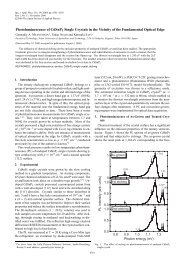

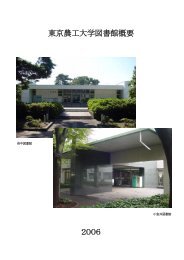

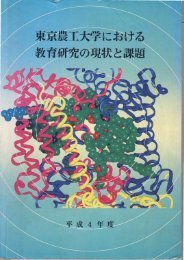


![J. Magn. Magn. Mater.304 [1]](https://img.yumpu.com/36362486/1/184x260/j-magn-magn-mater304-1.jpg?quality=85)
